Newark Holiday Fortnight 1954
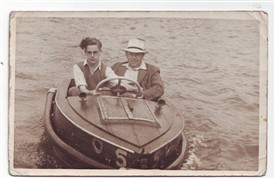
A young Bill Coyne with his father Frank Coyne at Skegness Boating Lakes Early 1950s
Coyne Family propably Alice Coyne
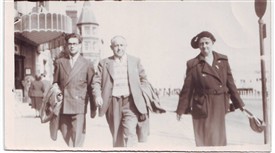
Bill Coyne with his Mother and Father, Frank and Alice Coyne
Coyne Family
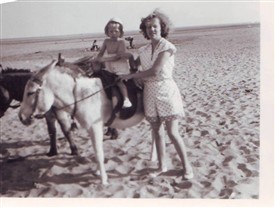
My Brother David Coyne and with my mother Elaine Coyne (nee Wright)
Bill Coyne
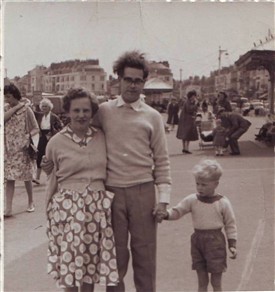
Elaine, Bill and David Coyne at the seaside, late 1950s
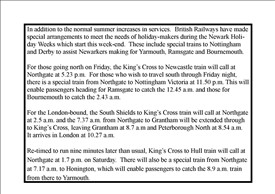
British Railway Announcement July 14th 1954
Extract From Newark Adverstiser
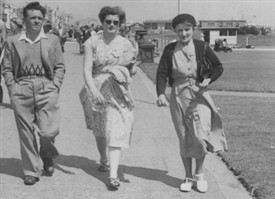
Roy Lanes, Edith Lanes (later Mrs Coyne) and Mrs Mary Allwood
Yarmouth mid 1950s
The Newark Exodus
By Anne Coyne
FACTORIES CLOSE FOR THE SUMMER BREAK
A TENTH OF NEWARK HAS HOLIDAY TONIC
These were the headlines from the lead article in the Newark Advertiser on Wednesday 21st July 1954. The annual holiday fortnight had begun on the previous Saturday and by mid morning public transport had carried more than one tenth of the town’s population out of the town. Hundreds more left during the weekend by car as well.
The newspaper also reported that the town’s biggest employers were virtually closed down. 3,500 workers from Ransome and Marles and 700 from Worthington-Simpson’s were on holiday. This annual shut down led to some smaller firms and shops to close, thereby adding to the exodus. Mrs E M Coyne worked at Currys in 1954 and she reports that trade really dropped in the town during the holiday fortnight and this was why some of the shops closed as well.
The rush to leave started at tea-time on Friday and reached its peak between 6am and 10am on Saturday as east bound coaches left the town. Every taxi in Newark was busy on Friday evening and Saturday morning with one firm dealing with 250 bookings and conveying 1,000 people.
Both platforms of Newark Northgate Station were filled early on Saturday morning. Trains carried Newarkers to various destinations, 230 to London and onward to the SouthCoast, 290 to the East Coast and 150 to the west and south-west. 40 went northbound to Newcastle, 40 to Hull and 25 to Edinburgh.
Hundreds were found to be queuing in the rain for motor-coaches from Castlegate and the bus station. Buses carried 500 Newarkers to Nottingham to make connections for other parts of the country between 6am and 9am. During this time coaches also carried 480 to Skegness, 100 to Mablethorpe, 50 to Cleethorpes and 400 more to the distant resorts of Yarmouth, Scarborough, Bridlington and Blackpool.
The Advertiser visited Newarkers in Skegness on the first Monday of the holiday. The newspaper reported that although Monday was the first day of bright sunshine, all looked tanned and fit as though they had already been on holiday for two weeks.
The newspaper found a MrJoeShore, 66 of Balderton, reclining on a deck chair. The newspaper compared how different the peaceful surroundings were to the three wars in which Mr Shore had fought.
Mr Shore was a drummer boy in the Boer War and he also served in the 4th Battalion Sherwood Foresters through World War I. Between the wars he joined the Territorials of the 8th Battalion and served for 23 years. When World War II started, he was almost drafted to Norway but officials realised in time and stopped the enlistment.
The logistics of moving so many people at once was difficult for the transportation companies and British Railways announced the following additional trains for the holiday fortnight. It is interesting to note that in 1954 public transport was used much more frequently than now and it was more integrated than today.
The Newark Advertiser archives available on microfilm at Newark Library are an excellent resource for anyone wishing to study local history. The adverts and articles contained in the newspaper give a real insight into both working life, the issues of the day and social life of our ancestors.
Click here to go to the next article in this series